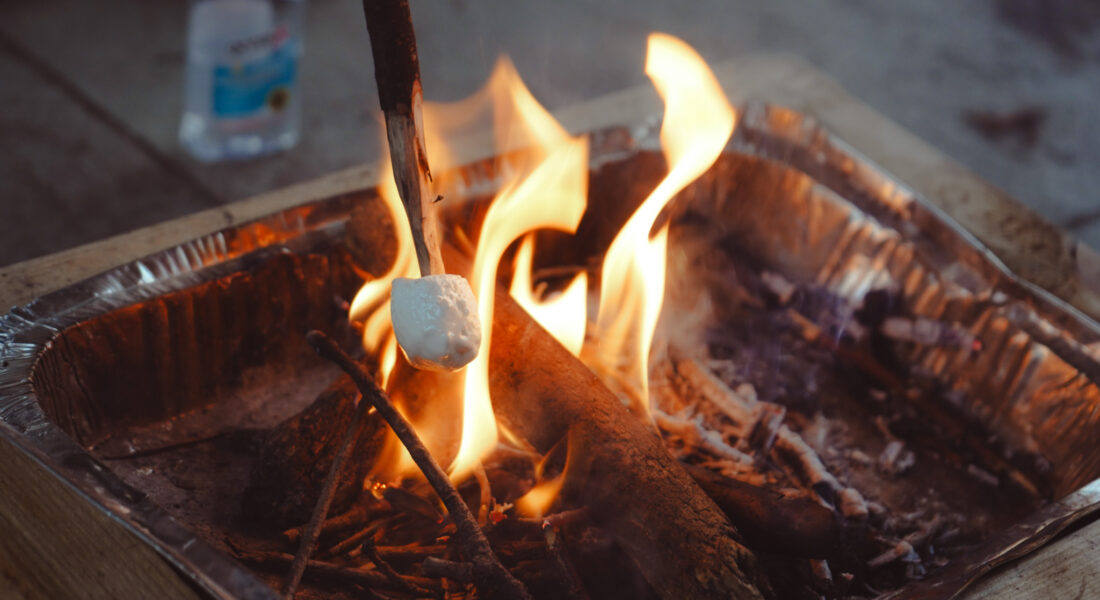
Budding Experts is our student-led interview series highlighting young people and the fun things they learn about during our programs. At Camp Fire, students learn about outdoor activities, art, STEM, and the environment from trained specialists and instructors.
This month, we’ll learn from Kaliyah and Ta’Khya, who visited Camp Fire for a school field trip with Exploration High School. Throughout the school year, K-12 students venture out to our 103-acre Excelsior property, where our Environmental Education team leads a variety of nature-based learning programs and fun activities chosen by the schools themselves. We host around 130 field trips each year.
Exploration High School is one of our long-term partners. Since Fall 2021, we’ve had the pleasure of engaging with them through regular field trips, monthly in-school programs, and yearly summer camp overnight visits.
Picture this: it’s an overcast, late-winter day. The wind is blowing at 19 miles an hour, and you and your classmates have been tasked with none other than…fire building! How does it go? Let’s see!
T: Hi, my name is Ta’Khya, and this is…
K: Kaliyah.
T: And we’re from Exploration High Shchool… Start over, cuz what is Exploration High Shchool?
K: High Shhhhchooool.

T: Kaliyah, what did you think about building the fire?
K: (Coughs) No… No.
T: You didn’t like it?
K: Moral of the story…. I’d be dead.
T: If you didn’t know how to build a fire? Or if you had to build one?
K: If I had to—if I was stranded in the woods right now, I would be dead.
T: ….And you know what? That’s real. I get that. What’s something you learned from this place?
K: Lean-to.
T: What is lean-to?
K: It’s when you stack the wood in a way that the air can’t reach it. Right, right, right? And that makes the fires. Yeah.

The lean-to method is one of the three fire-building methods our naturalists teach in our Fire Building lesson, in addition to the cone and log cabin method. Considered the best method for windy days, the lean-to method involves using a pile of sticks or a couple of larger sticks to build a wall facing the direction the wind is coming. The fire-builder then rests other sticks on top of this wall to make a ramp, and then they put tinder and fire starter under the ramp. But be cautious—this type of fire can burn very hot, especially on a windy day!
T: Would you think about doing this again for fun?
K: No.
T: (Laughs) What was the best part of doing this activity?
K: I got a free marshmallow.
T: Yeah!

Thank you to Kaliyah and Ta’Khya for sharing their honest feedback on windy-fire building. Despite the challenges, and after much trial and error, they were able to build a successful fire and roast some marshmallows over it. They are Budding Experts, indeed!
Remember: you should only build a fire if you’re with an adult and have reviewed the fire safety rules:
- Choose your fire area wisely. Make sure there are no overhanging branches and clear an area at least 10 feet in diameter. Use existing fire pits or surround your fire with rocks.
- Check to ensure that no one near the fire is wearing loose or dangling clothing or accessories. Avoid wearing nylon or polyester clothing near the fire.
- Tie back long hair.
- Refrain from running near a fire.
- Do not use liquid fuel to start a fire.
- NEVER leave your fire unattended!
- Extinguish the fire properly! If it is too hot to touch, it is too hot to leave. Make sure all embers are out and the fire has been drowned in either water or dirt.
Can’t get enough of this month’s Budding Experts? Check out our video interview!
Shoutout to our Senior Naturalist team for developing the curriculum that this lesson (and blog post) is based off of.
Did you know that our environmental education curriculum is based on the Minnesota Department of Education STEM standards and social emotional learning (SEL) competencies? That means that at Camp Fire, youth strengthen their knowledge of the objectives they learn at school, becoming budding experts.
Check out our education page to explore all the learning opportunities Camp Fire offers year-round.
